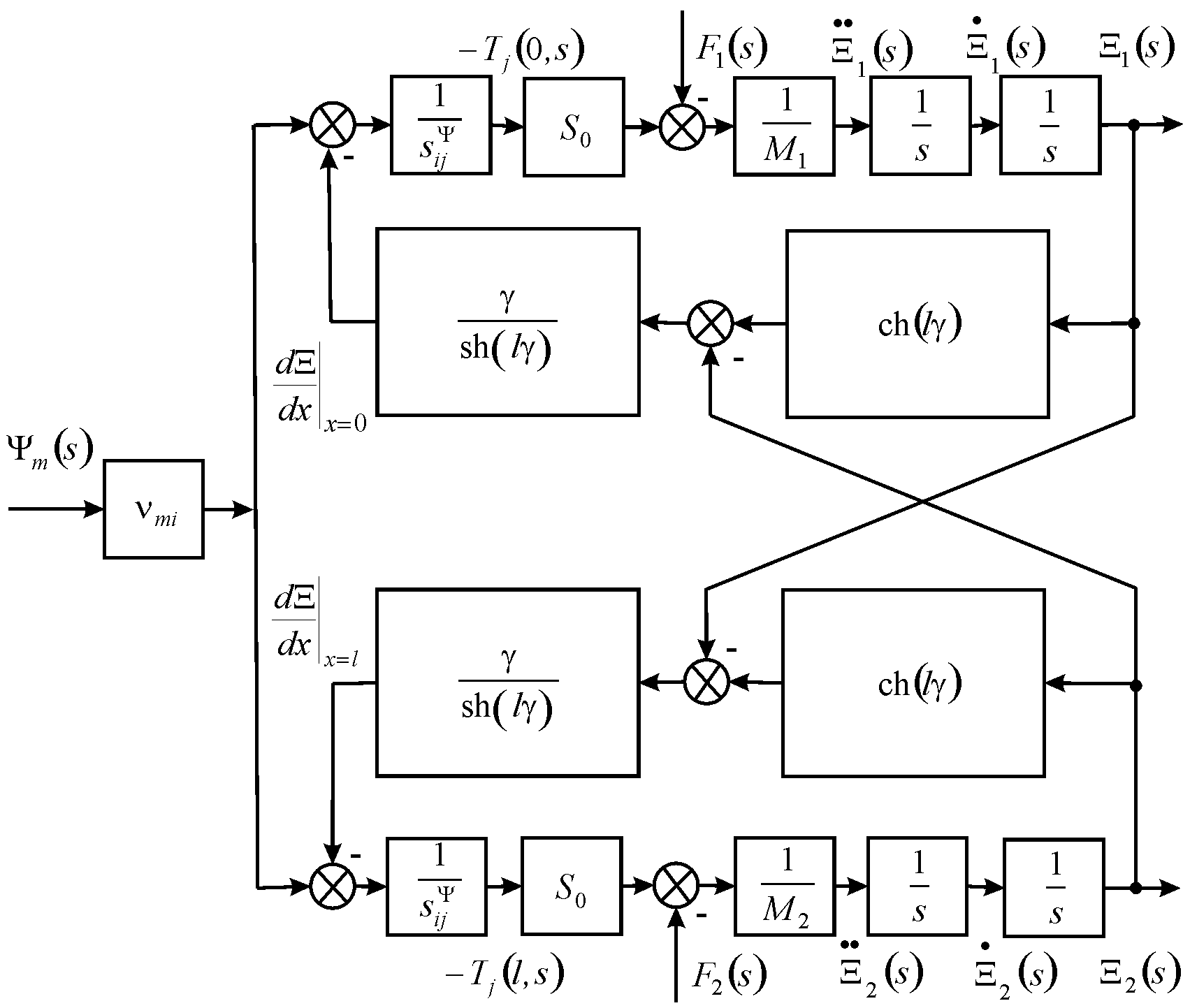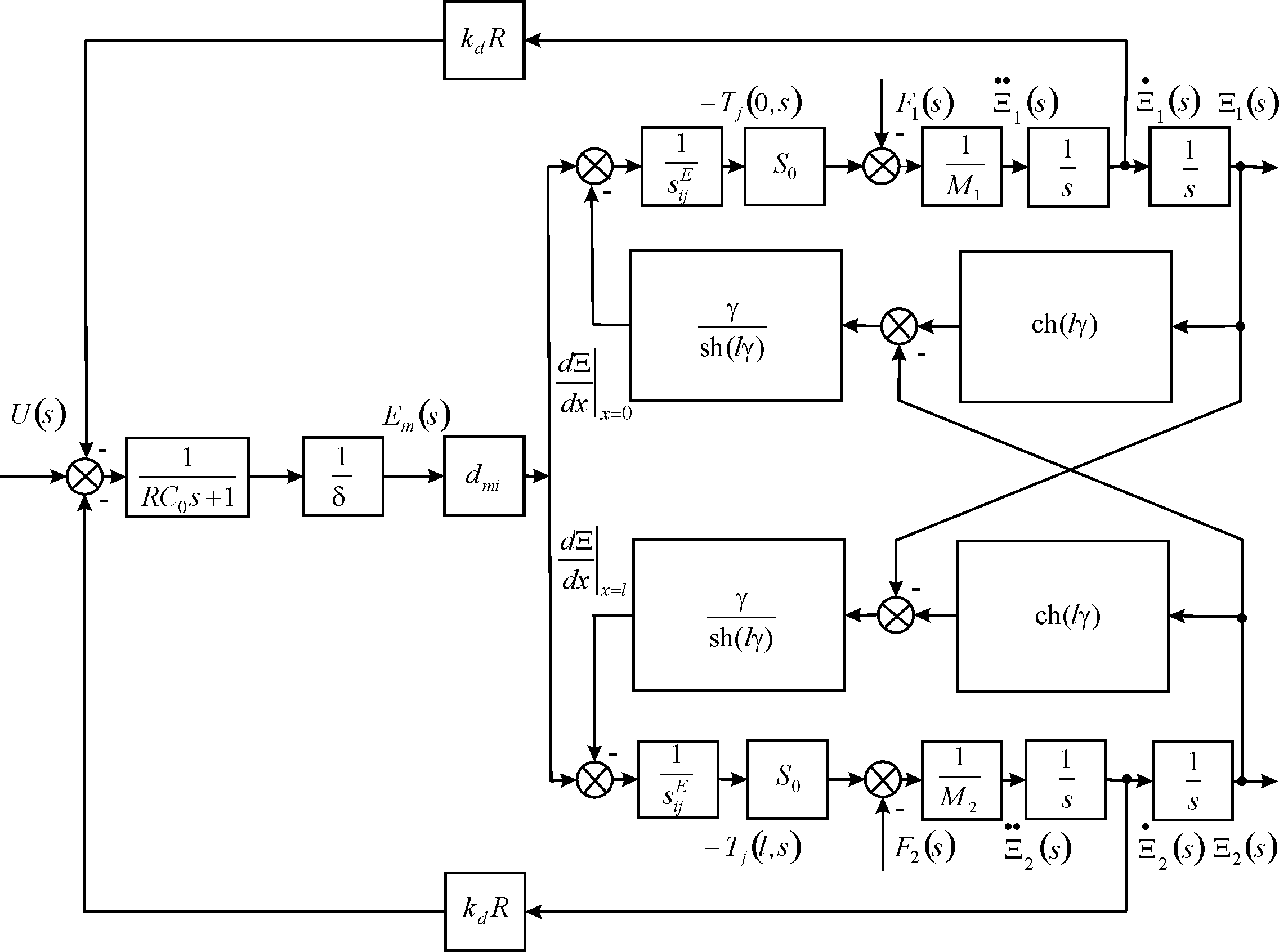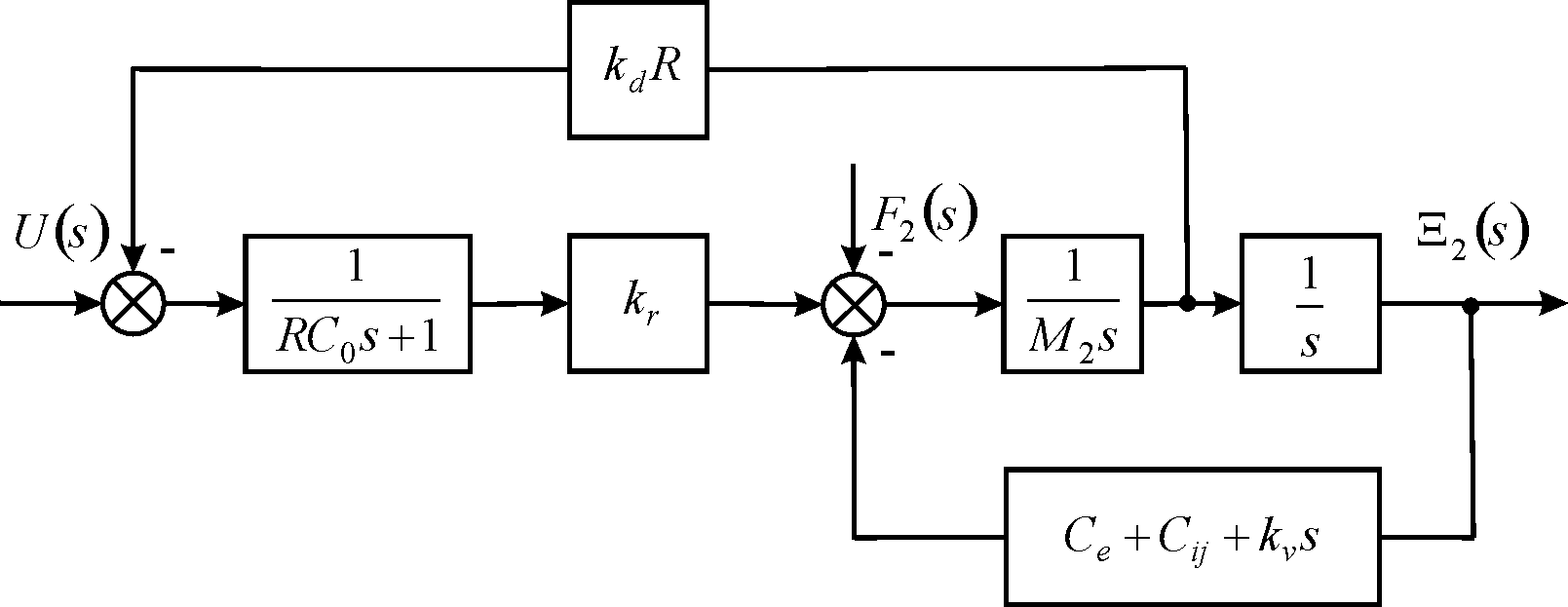The method mathematical physics is using for calculation the structural scheme of piezoactuator in nano control systems for astrophysics.
Structural scheme of piezoactuator
The structural scheme of the piezoactuator for astrophysics is calculated by the method mathematical physics by using the equations of the inverse and direct piezoeffects and the decision of the second order ordinary differential equation for the piezoactuator. From the structural model and scheme we have the matrix equation and the mechanical characteristic the nano piezoactuator, and its parameters in adaptive optics for astrophysics.
Let us construct of structural models of piezoactuators. The expression of the inverse piezoeffect.1-15
here
,
,
,
,
, are the relative displacement, piezomodule, strength electric field, elastic compliance, strength mechanical field.
The expression of the longitudinal inverse piezoeffect has the form.1-15
The second order ordinary differential equation of the piezoactuator is used.4-54
here
, s, x, γ are the Laplace transform of the displacement, the parameter, the coordinate, the coefficient of propagation. For the longitudinal piezoactuator we have at
the deformation
and at
. The decision is calculated.
From the expression of the longitudinal inverse piezoeffect and and two boundary conditions we have the set of equations.4-32
After using the decision of the differential equation of the we have the structural model of the longitudinal piezoactuator.
here
,
are the Laplace transforms of the displacements,
is the area.
The expression of the transverse inverse inverse piezoeffect has the form1-15
The decision of the differential equation is written.
From the expression of the transverse inverse piezoeffect and two boundary conditions we have the set of equations.
By using the decision of the differential equation of the we have the structural model of the transverse piezoactuator.
The expression of the shift inverse inverse piezoeffect has the form.1-15
The decision of the differential equation has the form.
From the expression of the shift inverse piezoeffect and two boundary conditions we have the set of equations.
By using the decision of the differential equation we have the structural model of the shift piezoactuator.
At
the decision in general of the differential equation of the piezoactuator has the form.
From the expression of the inverse piezoeffect and two boundary conditions we have the set of equations.
By using the decision in general of the second order ordinary differential equation the structural model in general of the nano piezoactuator is calculated on Figure 1.
here

Figure 1 Structural scheme in general of nano piezoactuator.
The matrix for the deformations of the piezoactuator from the structural model and scheme on Figure 1 is calculated.
The longitudinal deformations are obtained.
For
= 4×10-10 m/V, U = 50 V,
= 1 kg,
= 4 kg we have
= 16 nm,
= 4 nm and
= 20 nm with error 10%.
Let us evaluate the influence of the anti electromotive force on the deformation of the piezoactuator. The expression of the direct piezoeffect1-15 is used
where
,
are the electric induction and the permittivity,
The direct coefficient of the piezoactuator is written for calculation the voltage negative feedback from anti electromotive force.
The expression of the voltage negative feedback from anti electromotive force on Figure 2 is used.
,

Figure 2 Structural scheme of piezoactuator with negative feedback from anti electromotive force.
The maximum the strength mechanical field and the force in the static working regime have the form at voltage control.
The maximum force in the static working regime has the form at current control.
here
is the coefficient of electromechanical coupling.
The expressions for the strength mechanical field and the maximum force in the static working regime we have at current control.
The mechanical characteristic of the piezoactuator is determined in the static working regime.
The adjustment characteristic of the piezoactuator is calculated in the static working regime.
The mechanical characteristic of the piezoactuator has the form.
The expression of the mechanical characteristic for the transverse piezoactuator is determined
At
= 2∙10-10 m/V,
= 0.25∙105 V/m, h = 2.5∙10-2 m,
= 1.5∙10-5 m2,
= 15∙10-12 m2/N we have the parameters of the transverse piezoactuator
= 125 nm,
= 5 N with error 10%
The deformation of the piezoactuator is obtained at voltage control and elastic load.
,
The adjustment characteristic has the form.
The coefficients of the piezoactuator in general are calculated for the structural scheme of the piezoactuator with negative feedback from anti electromotive force.
At one fixed face and elastic-inertial load of the piezoactuator Figure 2 is transformed to Figure 3.

Figure 3 Structural scheme of piezoactuator with negative feedback from anti electromotive force.
At
we have the expressions for the transverse piezoactuator at voltage control.
,
At M = 4 kg,
= 0.1×107 N/m,
= 1.5×107 N/m the parameters of the transverse piezoactuator are calculated
= 0.5×10-3 s,
= 2×103 s-1 with error 10%.
The transverse deformation at voltage control has the form.
At
= 2∙10-10 m/V,
= 22,
= 0 we have the parameter of the transverse piezoactuator
= 4 nm/V with error 10%.


